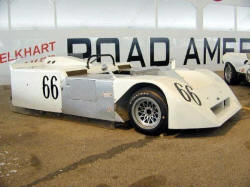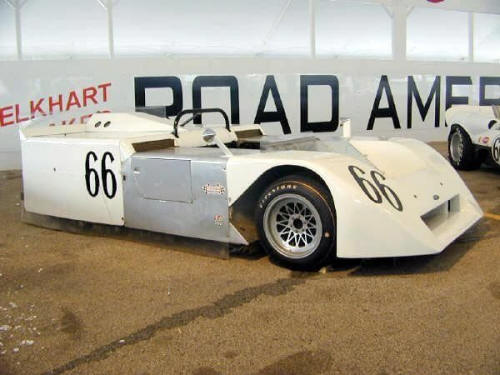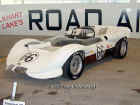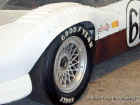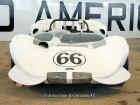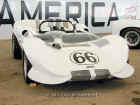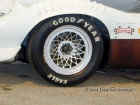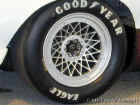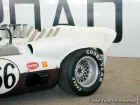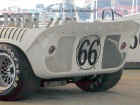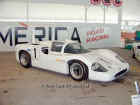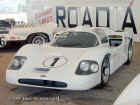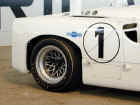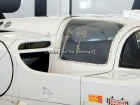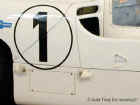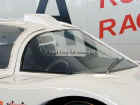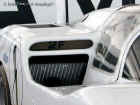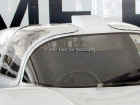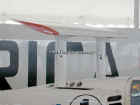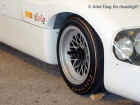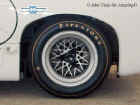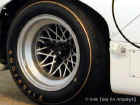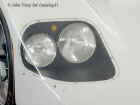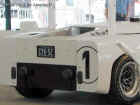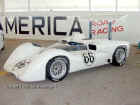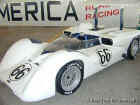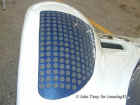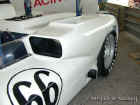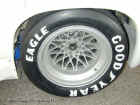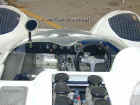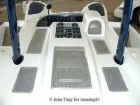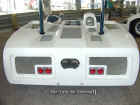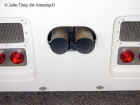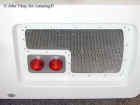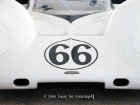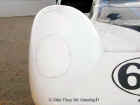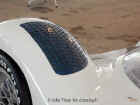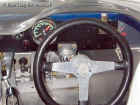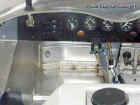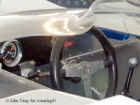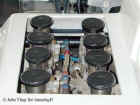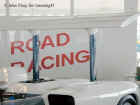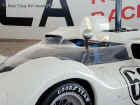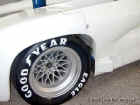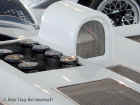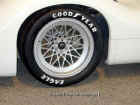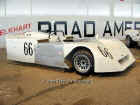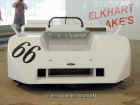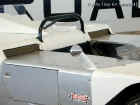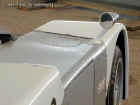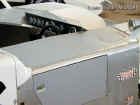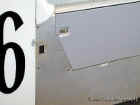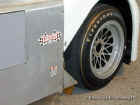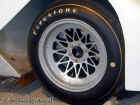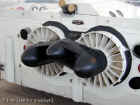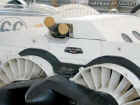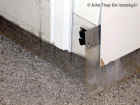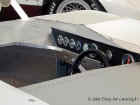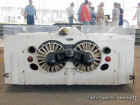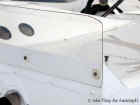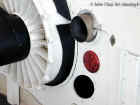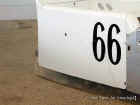|
Legal Notice
No material from Modeler Site any Web site owned, operated, licensed, or controlled by Damian Covalski may be copied, reproduced, republished, uploaded, posted, transmitted, or distributed in any way, except that you may download one copy of the materials on any single computer for your personal, non-commercial home use only, provided you keep intact all copyright and other proprietary notices. Modification of the materials or use of the materials for any other purpose is a violation of Damian Covalski's copyright and other proprietary rights.
Read More here > Legal notice
|
On the Can Am theme - Peter Radcliffe and John Simons of Marsh Models have been looking at the Chaparrals, Jim Hall's unusual machines which always inspired and always provoked controversy. Items such as resin bonded chassis, side radiators, advanced aerodynamics and ground effect were all first seen on the Chaparrals.
|
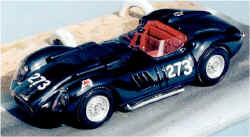
|
|
The Lister Chevrolet from Marsh models
Jim Hall's first big banger sports car was his supercharged Lister Chevrolet.
|
When it first appeared in 1961, the Chaparral 1 gave little foretaste of what was to come; indeed it
was front engined when already the rear engined Cooper Monaco and Lotus 19 had shown the future
direction. However, Jim Hall chose a lightweight engine mounted as far back as possible and this
gave a very favourable weight distribution of 55% to the rear. In fact the car almost reminds one of a
rounded off Panoz LMP in its basic layout, and of course Panoz and Lister have shown that there is
life yet in the front engined route. The first glimpse of what was to come was perhaps the Chaparral
1 at Sebring 12 hours of 1963 where the car sprouted two large fins on the rear and lost its pretty
rounded shape. This odd shape was due at least in part to the fact that the car was being used to
test the bodywork for the first rear engined car
|
The Chaparral 2
It was the first real sign of the innovations to come, the main one being that the
monocoque tub was made of "Plastic" and everything was glued to the tub with epoxy resin. Although they originally intended the car to be a coupe, it was soon decided that it was more
practical to make an open car.
|
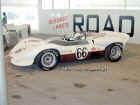
|
The nose was designed as an inverted aerofoil; an aircraft engineer said it should have worked, but the car was but 6 inches off the ground not several feet as an aircraft
on its landing gear would be. Thus at its debut race the LA Times GP in October 1963 the car had
chin spoilers under the nose to prevent lift.
The debut was full of promise; Hall led the first four laps before an electrical fault. The Nassau
Speed week in December saw a second car for Hap Sharp, who was to become a regular feature in
Chaparral history. Sharp's car used an Oldsmobile engine and Cooper Gearbox while Hall's used a
Chevrolet engine and Colotti gearbox.
|
In 1964 the Chaparral 2 had a new lower nose but this exposed aerodynamic problems at the rear, which were eventually overcome with a vertical tail spoiler. Laguna Seca in May saw the debut of the Auto box. Hall won first time out and credits the idea of the auto box to Hap Sharp. The transmission was developed by Frank Winchell's group at Chevrolet Research & Development.
|
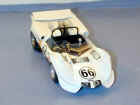
|
|
The 2A "Flipper" from ESDO
|
The first was a one speed with Hydraulic torque converter, by the end of '64 a two speed was used, and then later with the 427 engines a three speed box was introduced. A four speed was considered but never used.
Chaparral 2A
In 1965 the 2C won the 12 hours of Sebring and in October, moveable rear wing appeared on the 2C,
which had an all aluminium chassis instead of the 2's plastic tub.
The 2D started seven races in 1966 and finished one. It wasn't a great race for either of the two cars entered at Sebring. Le Mans was similarly unsuccessful - how ironic that the car should win at the Nurburgring of all places.
|
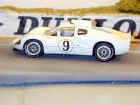
|
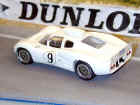
|
|
2D1LMM66 and 2D2LM66 - The Le Mans 2D from Provence Moulage
|
|
The 2F was the spectacular, winged creation, but before it arrived on the scene, a 427 all-aluminium
engine was shoe-horned into the 2D for Daytona, which meant some major bodywork changes. Two
large radiators were fitted into the nose. Upon seeing a photograph many years later, Jim Hall would
say, "I am shocked. I thought I worked here. What are those?"
FIA regs, stipulated a luggage compartment.
|

|
|
1967 2D Daytona and Sebring cars from Marsh
|
The size of the 427 meant that this wouldn't fit inside
the car, so Hall simply tacked a square box on the back. "That would really irritate the FIA people.
The guy said it wasn't a luggage compartment, and I just said, 'well, define it.' You know I just love
those rules."
The 2F in 1967 again showed great pace and again only finished once, but like the 2D its only finish
was a win - in the BOAC 500 at Brands Hatch. This proved the last race for the car as FIA rule
changes banned the Big Banger sports cars.
|
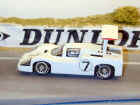
|
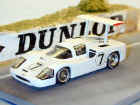
|
|
2F1LM67 and 2F2LM67 - Le Mans 1967 2F by Provence Moulage
|
Chaparral 2F
|
Alongside the 2D for long distance races in 1966 came the 2E for the Can Am series. The 2E
reinforced Chaparral's reputation for advanced thinking. There were plenty of rumours that something
special was coming but when the cars did not appear for the first race or the first session of practice
for the second, people began to think they were not coming and that they were just rumours.
|

|
|
Phil Hills 2E by Marsh
|
Late in
the afternoon at Bridgehampton the Chaparral team arrived, the crowds soon gathered in stunned
silence.
Firstly there were the huge intakes for the rear-mounted radiators but most stunning was the huge
high mounted adjustable wing over the rear wheels. Aerodynamics and racing car design had been
turned on its head. The 2E in 1966 at Laguna Seca was to score Chaparral's only Can Am win.
The 2E was developed into the 2G of 1967.
Then in 1968 the 2G gained the 427 which unfortunately was not very reliable. A spectacular crash at Las Vegas in November 68 effectively ended Jim Hall's driving career.
The next Chaparral was just as revolutionary, the 2H but it was to prove the least successful; the
car was very narrow and very low in its original design with De Dion axles. John Surtees was
contracted to drive but would not do so until visibility was improved, until he drove the 2h he drove a Mclaren M12 which later sprouted a high wing. Hall's accident at the end of '68
curtailed the development and testing and a brave concept perhaps never had the opportunity to
show its full potential.
|

|
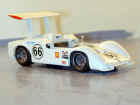
|
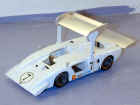
|
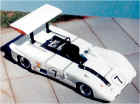
|
|
Marsh 2G67
|
Esdo 2G67
|
Esdo 2H
|
Marsh M12
|
Chaparral 2E
|
For the 1970 season, Jim Hall again rocked the racing car world - ground effects had arrived with the
2J. The potential was so obvious that the opposition immediately started a campaign to get it
banned. Denny Hulme (much later) admitted that this was probably the biggest mistake they made
and probably signalled the beginning of the end of the Can Am series.
|
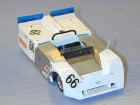
|
|
The 2J from Illustra models
|
Chaparral 2J
|
The last Chaparral was the 2K Indy car that was to win the 500 in the hands of Johnny Rutherford in 1980. The Indy 2K by Formula Models. |

|
Not only did Jim Hall's cars inspire the public, but model makers too have avidly collected the Texas
Road Runners. All the cars have at times been available in 1/43rd scale and shortly with releases
planned they will again all be available. The main producers have been MARSH Models and ESDO.
Chaparral Models Available
Lister Chevrolet- Marsh Models
Chaparral MKI- Illustra several versions
MK2 and 2A-ESDO
MK2C-ESDO and deleted Marsh
MK2D Daytona 66-Provence Moulage
MK2D Le Mans and Nurburgring 1966- Provence Moulage
Mk2D Daytona 67- Marsh
Mk2D Sebring 67-Marsh
MK2E- ESDO and deleted Marsh
MK2F- Le Mans and Brands Hatch 1967- Provence Moulage
MK2G 1967 ESDO and deleted Marsh
MK2G 1968 ESDO and deleted Marsh
MK2H 1969 ESDO
Mclaren M12 high or low wing-deleted Marsh
MK2J 1970 ESDO and Illustra
MK2K 1979/1980-Formula Models
Now come on John I know you have bits for most of the Chaparrals so how about a reissue?
Our thanks to John Tinay for providing us the real car photos
Support us ordering our notes in PDF > Here
|

